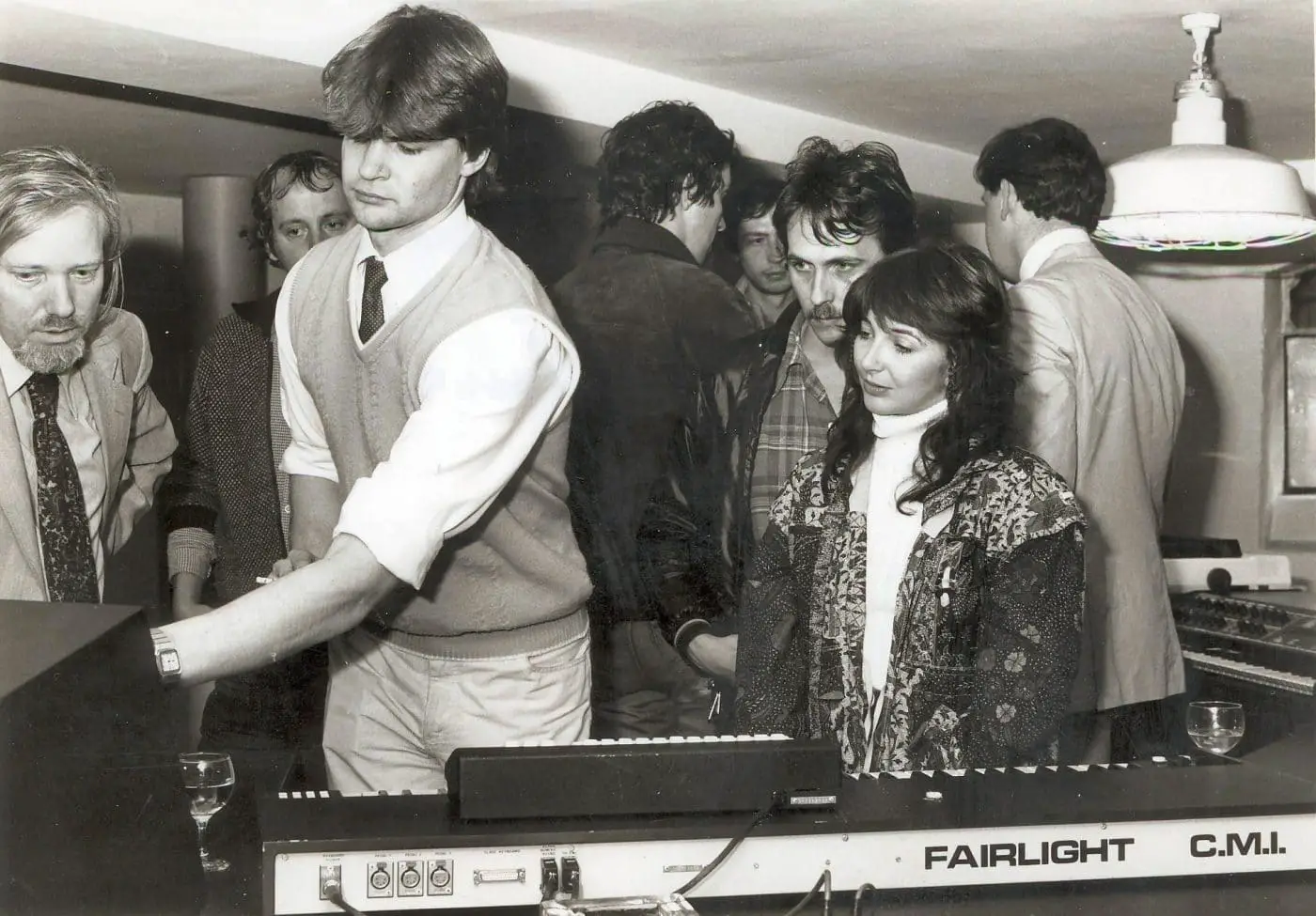[dropcap size=big]T[/dropcap]he birth of the synthesizer brought with it an era of musical alchemy still considered among the best in the last 60 years – the ’80s.
The dance and pop scene of the ’80s was rife with the adoption of a myriad of synthesizers by prominent artists of the time. Through a retrospective lens, it’s apparent that nearly every major hit of the decade bore the stamp of synth magic that had so suddenly been made available to the public.
So ubiquitous was the technology at the time, that you’d be hard-pressed to find a recognizable tune from the era that failed to feature it. You might even say synths made the ’80s altogether.
What synthesizers are and where they came from
Synthesizers generate sound signals electronically.
The earliest versions accomplished this and little more. In fact, the electronic signals they generated weren’t even audible and had to be amplified with other specialized equipment. Think electric guitar, but without the guitar or any reasonable means of making music with it at all.
Walls of machinery rarely scream “come and get me” to the musically inclined, thus understandably, there were very few musicians itching to poke around on RCA’s Mark 2 sound synthesizer.
You needed an amplifier to get them to ‘sing’ and enough abstract subjectivity to listen to their ‘singing’ for more than a minute without ripping out your eardrums. On top of being lame sound-wise, early synthesizers were also ridiculously complex. Walls of machinery rarely scream “come and get me” to the musically inclined, thus understandably, there were very few musicians itching to poke around on RCA’s Mark 2 sound synthesizer.
Cue the entrance of keyboard controllers.
With a controller made in the familiar form of a piano’s keys, artists could finally push scientists out of the way and get on with dredging listenable tunes from these strange electronic devices. Of course, only artists with access to big money studios had this opportunity; synths didn’t grow on trees and their price tags were made them more than a tad exclusive.
Add to that the fact that early synths were basically glorified organs and it becomes obvious why the technology had just barely altered the disco scene in the ’70s. Unless your lifelong aspiration was to play “In-A-Gadda-Da-Vida” on endless repeat (that’s the radio version, right?) you were bound to get bored quick.
Unless your lifelong aspiration was to play “In-A-Gadda-Da-Vida” on endless repeat (that’s the radio version, right?) you were bound to get bored quick.
It was the epoch of the ’80s that first saw complex, powerful, multi-faceted synthesizer technology emerge, half-naked like a robotic Schwarzenegger, into the light of day. Much like the Terminator, it took the world, particularly that of music, by surprise.
The Fairlight CMI
…the second version captured everyone’s attention with its revolutionary “page R;” a graphical composing interface that formed the basis of all composing software to follow it.
One salient synth of the many that emerged from the late ’70s to late ’80s was the CMI by Fairlight; particularly, the second version.
This composing behemoth was a full sound production system outfitted with a piano keyboard, qwerty keyboard, screen and accompanying light pen.
Where the first in the series failed to appeal to musicians thanks to its obtuse musical programming language, the second version captured everyone’s attention with its revolutionary “page R;” a graphical composing interface that formed the basis of all composing software to follow it. With loads of analog sound samples to work with, musicians could suddenly create music graphically without even needing to play it.
Although this device was much more than a synth in its own right, it’s synthesizer capabilities were at the core of its functionality from the start and it’s credited with having been used on almost every album of the early ’80s. Along with all the other synths that were available at the time, it’s safe to say few tracks escaped the era unscathed by such technology.
Synths meet the ’80s
Suddenly, bold and bouncy beats were knocking unsuspecting listeners silly, hazy padded tones were washing over their senses and musicians everywhere were drooling over the latest synth developments that would give them a creative edge on which to crank out their next single. It was at this very moment that the ’80s were born.
Aside from listing big names to have taken fondly to the technology like Stevie Wonder, Kate Bush, Michael Jackson and so on, we can only wonder just how deeply emerging synthesizer technology may have influenced the ’80s.
Inspired by futuristic sounds, film directors may have conjured up such classics as Star Wars, Ghostbusters and Back to the Future; totally unaware of the influence electronically-produced sounds had wrought on their imaginations.
Thomas Dolby was blinded by science in the ’80s. Perhaps everyone else was too. How else could the charts have been repeatedly dominated by the synth-pop creations of bands like Duran Duran, Soft Cell, A-Ha and Alphaville?
Could it be that electronically-produced sounds are simply more appealing than their analog counterparts? We’ll save that question for the trance crowd.




